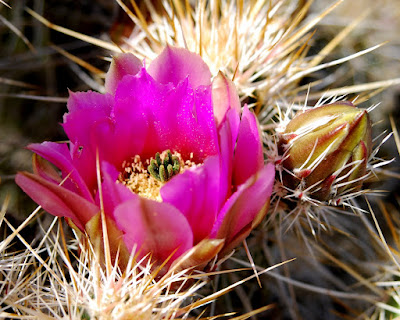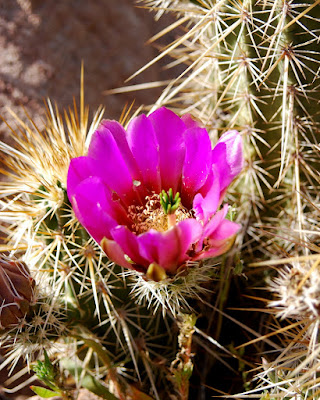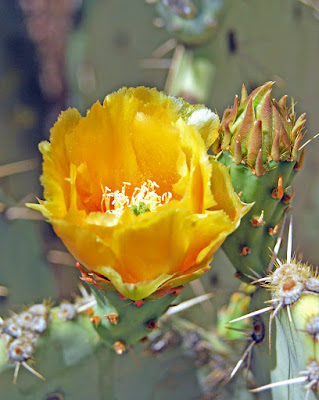Lavender, White, and Red
Globemallows are common along the roadsides of Arizona...ranging in color from white to lavender, orange through red. In the Spring and probably throughout most of the year these plants have sex.
To get the full story you'll have to look to the bees and other crawlers whose primary purpose is to gather pollen. It's only a secondary purpose to fertilize these flowers.
While the flowers leave reproduction to an industrious bee or thirsty hummingbird, it's none-the-less disconcerting that something as important as reproduction is abandoned to a secondary instinct.
We can contemplate this thought but get few productive results...
...or just look at the pics and realize that maybe flowers know something we don't.
This blog is dedicated to Olivia Judson whose column for the New York Times has, since I can remember, provided me with thoughts and insights, new ideas and perspectives. She'll be taking a year-long sabbatical and will be missed. Her bio should be common knowledge to anyone interested in the natural world.Here's a snip:
Olivia Judson, an evolutionary biologist, writes every Wednesday about the influence of science and biology on modern life. She is the author of “Dr. Tatiana’s Sex Advice to All Creation: The Definitive Guide to the Evolutionary Biology of Sex.” Ms. Judson has been a reporter for The Economist and has written for a number of other publications, including Nature, The Financial Times, The Atlantic and Natural History. She is a research fellow in biology at Imperial College London.
Labels: bee, cactus flower, cactus flower photography, desert environment, desert photography, globe mallow


















